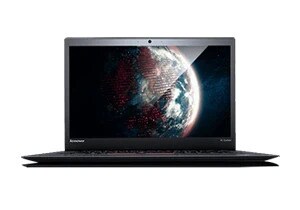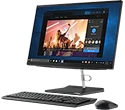-
Explore LaptopsCopilot+ PC 2-in-1 Laptops Gaming Laptops Mobile Workstations View all Laptops Windows 11
-
By BrandThinkPad ThinkBook IdeaPad LOQ Yoga Legion
-
Espot Path:
/espotdirctory/pc-laptops-espot1
-
Espot Path:
/espotdirctory/pc-laptops-espot2
-

 Contact
ContactCONTACT US
Service Centers
Think products & projects: choang@lenovo.comTECHNICAL SUPPORT
Kindly get information of product and S/N before contact us.
Hotline: 1800 6318 (Mon – Fri, 8:30 AM – 5:30 PM)
Close during public holidaysLENOVO VIETNAM REP. OFFICE
Hochiminh office: R. 1701A, 17F, Empress Tower, 138-142 Hai Ba Trung Str., Ward Dakao, District 1.
Tel: +84 28 3824 3504
Fax: +84 28 3824 3503
-

 Contact
ContactCONTACT US
Service Centers
Think products & projects: choang@lenovo.comTECHNICAL SUPPORT
Kindly get information of product and S/N before contact us.
Hotline: 1800 6318 (Mon – Fri, 8:30 AM – 5:30 PM)
Close during public holidaysLENOVO VIETNAM REP. OFFICE
Hochiminh office: R. 1701A, 17F, Empress Tower, 138-142 Hai Ba Trung Str., Ward Dakao, District 1.
Tel: +84 28 3824 3504
Fax: +84 28 3824 3503

What is an Ultrabook?
First there was the laptop, the first truly portable PC. Then came smaller, lighter tablets and netbooks, which were similar to laptops but achieved their tiny size by sacrificing internal storage, battery life, processor speed, and so on. Finally came the Ultrabook -- as small as many netbooks or tablets but with internal components and computing abilities more like those of a full-fledged laptop.
At least, that was the expectation. Yes, very thin and very powerful laptops have become a huge part of the home and business PC market. But while the concept is alive and thriving, the term Ultrabook -- conceived and trademarked by Intel Corp. -- has not taken off as a broadly recognized product category of its own.
Where did the term Ultrabook come from?
The term Ultrabook was coined (and trademarked) in 2011 by Intel Corp. With slate-style tablet PCs and low-powered netbooks becoming popular, the company saw a growing consumer appetite for laptops that would be nearly as thin as tablets but offer faster processors and other features found in higher-end systems.
In particular, Intel saw a market for its new generation of low-energy, low-heat processors, which it designed to operate within the tight confines of a small laptop frame while still running at up to 2.0 GHz cycle times or more. The company worked with multiple PC manufacturers to combine its new chips with advances in storage and battery technology, and the first highly portable -- and highly powerful -- Ultrabook-labeled systems hit stores in late 2011.
How can I buy an Ultrabook?
In the years since they were first introduced, use of the term Ultrabook by PC marketers has declined considerably. Some analysts have attributed this to consumer confusion about where the new label fit in the hierarchy beside the existing netbooks and Chromebooks, tablets, 2-in-1s and regular laptops.
Still, PC makers regularly unveil new systems that meet or exceed the tough specifications Intel defined for Ultrabooks (see below). But most manufacturers have opted to sell these models under their own xxxxBook or Ultraxxxx trade names, or to add Ultrabook-like systems to their existing top-line brands, promoting them as high-powered laptops that are also "ultra light" or "extremely thin and light."
What qualifies as an Ultrabook?
Intel's Ultrabook standards have not been updated publicly for several years. But they still exist. So officially, a laptop qualifies as an "Ultrabook" if it meets the following physical specifications (there are additional technical specifications for processor type, etc., that we cover briefly below):
- Height (How thin?):
- 0.787 inches (20 mm) for laptops with smaller displays (less than 14")
- 0.905 inches (23 mm) for laptops with larger displays (14" or more)
- Battery Life (How long unplugged?):
- At least 6 hours of HD video playback or 9 hours of Windows OS idle time
- Resume Time (How long to wake up from hibernation?):
- 3 seconds or less
The Ultrabook specifications (last updated in 2013) also include requirements for particular low-voltage Intel processors and certain kinds of Intel-branded system management software. The specs even require that the display be a touch screen (reportedly based on Intel's belief at the time (thanks to user studies) that users would increasingly choose touch commands over keyboard ones).
Note that the standards do not establish a maximum display size for an Ultrabook. So, an Ultrabook can actually be quite large -- one could have, say, a 15" display as long as it also meets the requirements for thinness, processor type, and so on. Of course, practically speaking, the height standards for Ultrabooks will always limit their potential maximum display size (at least until advancing technology makes even bigger and thinner displays possible).












